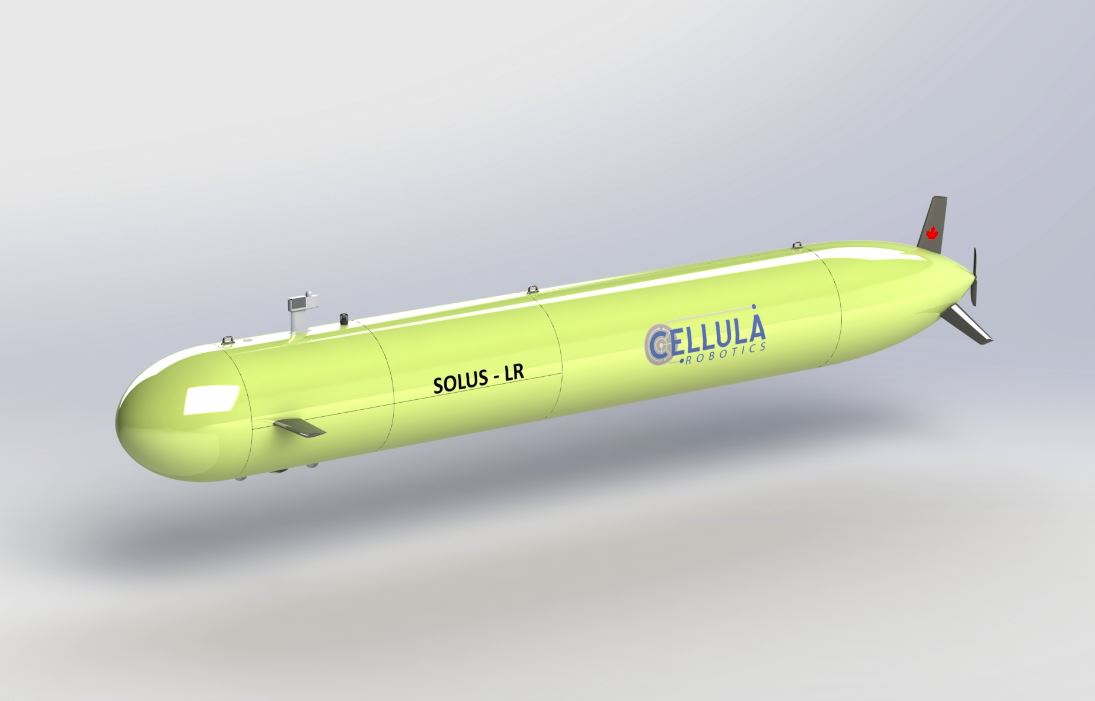Cellula Robotics Ltd. (Cellula) is pleased to announce the award of a contract by Public Services and Procurement Canada, on behalf of the Department of National Defence’s (DND) science and technology organization, Defence Research and Development Canada (DRDC), under the All Domain Situational Awareness (ADSA) Science & Technology (S&T) Program. Under this contract, Cellula will develop and perform a laboratory demonstration of an innovative fuel cell, specifically designed for use on a long range autonomous underwater vehicle. The demonstration will include operating in a simulated deep water environment, supplying several hundred kilowatt hours of energy.
The fuel cell system will incorporate a novel Hydrogen Peroxide Oxygen delivery system developed for this project by Protonex Technology Corporation, a subsidiary of Ballard Power Systems. By using Hydrogen Peroxide as the reactant, both the energy density and specific energy of the fuel cell system are greatly improved for subsea applications compared to conventional systems.
This is the first of a possible three-phase program. It has the potential to dramatically reduce the cost of ocean exploration, observation, and mapping by allowing users to run month-long underwater autonomous missions, eliminating the necessity and cost of surface launch/retrieval vessels or manned submarines.
Eric Jackson, President of Cellula, explains “This S&T program will speed our development of power systems poised to revolutionize autonomous underwater operations. The combination of Cellula Robotics’ subsea experience with Protonex’s long background in unmanned system power enables a completely new approach for these types of missions.”
This initial phase of the program is expected to continue for the first half of 2018. Funding for the next phases is conditional on DRDC approval of this proof of concept.
Read the DRDC press release here: https://www.canada.ca/en/department-national-defence/news/2018/04/government-of-canada-announces-contract-award-to-cellula-robotics-ltd-for-research-and-development-in-support-of-sub-surface-surveillance-in-arctic.html
Protonex Technology Corporation, a wholly-owned subsidiary of Ballard Power Systems (NASDAQ: BLDP; TSX: BLDP) is a leading provider of advanced power solutions for portable, remote and mobile applications, applying industry leading expertise in fuel cell, solar, and intelligent power management technologies. The company produces the PTX line of special operator focused portable power managers and battery chargers, and also provides fuel cell based solutions for unmanned systems, remote sensing and communications, as well as other defence and commercial applications. For more information, please visit Protonex’s website: www.protonex.com
Defence Research and Development Canada (DRDC) is the national leader in defence and security science and technology. As part of Canada’s Department of National Defence’s science and technology organization, DRDC provides DND, the Canadian Armed Forces and other government departments as well as the public safety and national security communities, the knowledge and technological advantage needed to defend and protect Canada’s interests at home and abroad. For more information, please visit DRDC’s website: www.drdc-rddc.gc.ca
All Domain Situational Awareness S&T Program (ADSA)
Through an investment of up to $133 million over five years, through to 2020, in the All Domain Situational Awareness (ADSA) Science & Technology program, DND is supporting a variety of innovative research and analysis projects, the outcomes of which are expected to contribute to the development of options for enhanced domain awareness of air, maritime surface and sub-surface approaches to Canada, in particular those in the Arctic. This research and analysis will be delivered through collaboration with other government departments (OGDs), academia, industry and allies. Surveillance solutions explored and potentially selected will strengthen the Government of Canada’s ability to exercise sovereignty in the North, and will provide a greater whole-of-government awareness of safety and security issues, as well as transportation and commercial activity in Canada’s Arctic.




